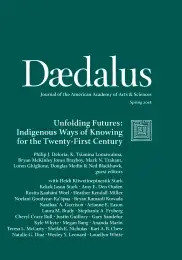Revolution in Higher Education: Identity & Cultural Beliefs Inspire Tribal Colleges & Universities
The public increasingly requires that higher education institutions demonstrate their return on investment by measuring graduation rates, cost per student, job placement rates, and income. The motivation is economic: public institutions are accountable to the investor, in this case, the taxpayer. Tribal Colleges and Universities (TCUs), on the other hand, are indebted to and inspired by the revolutionary vision of their founders: the ancestors, elders, and community members who believed that higher education rooted in tribal sovereignty, identity, systems, and beliefs would ensure the survival and prosperity of their people. TCUs are advancing Native student access and completion, developing scholars who are contributing to knowledge creation through community-based research, and promoting economic and entrepreneurial development in tribal communities.
The tribal college movement began with prayer and ceremony, according to the late Gerald One Feather (Oglala Lakota), a founder of the tribal college movement. The founders considered the history of American Indian education, which was guided by the problematic goal of assimilation and the rejection of being Indian, and understood that their efforts required strength and guidance from the Creator, as perceived by each tribal nation. The founders of the Tribal Colleges and Universities (TCUs) movement also understood that for Native people to survive and preserve what it means to be Indigenous, they had to assert control over the very educational systems and schools designed for assimilation. The tribal college movement was, and still is, about Native people taking control of their own lives.
In this essay, we outline three important aspects of the TCU movement. First, we offer a brief origin story of the concept of TCUs. Second, we highlight . . .
